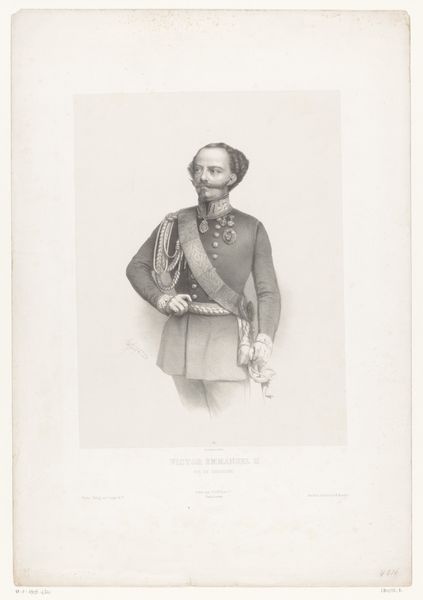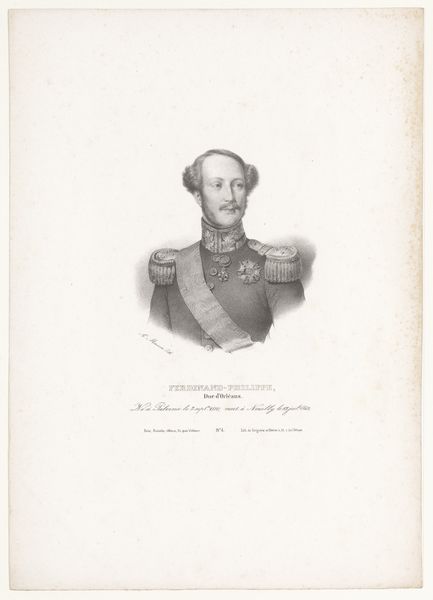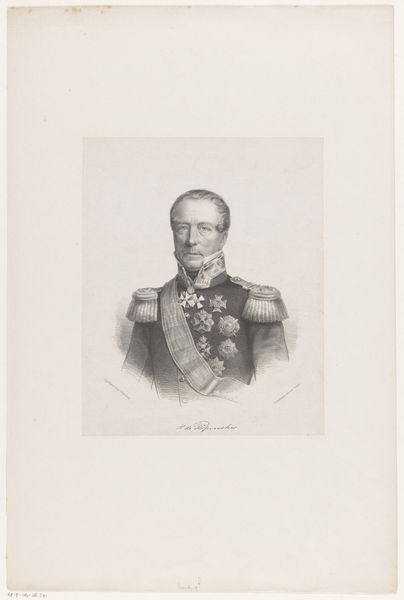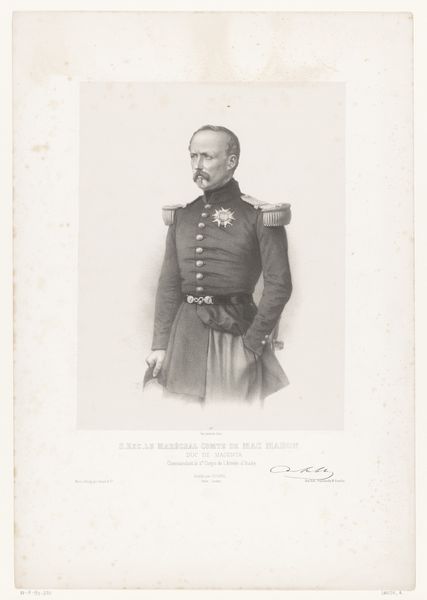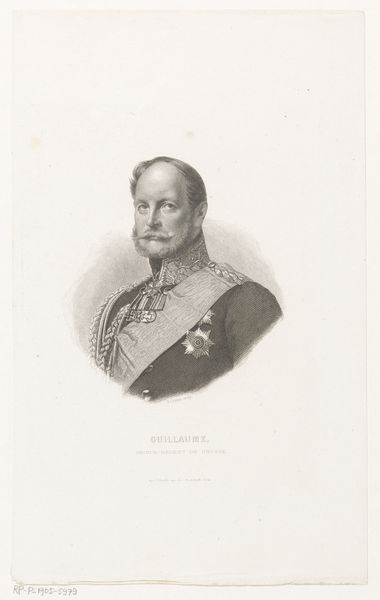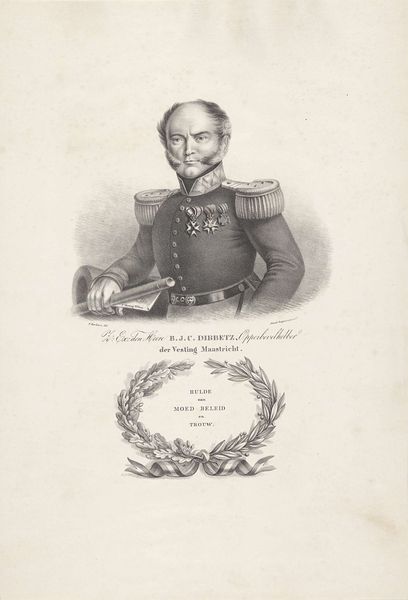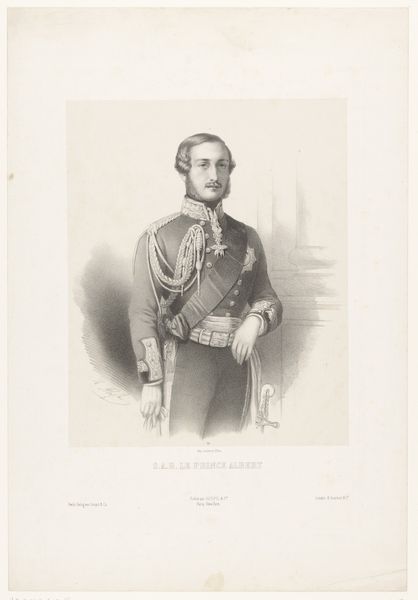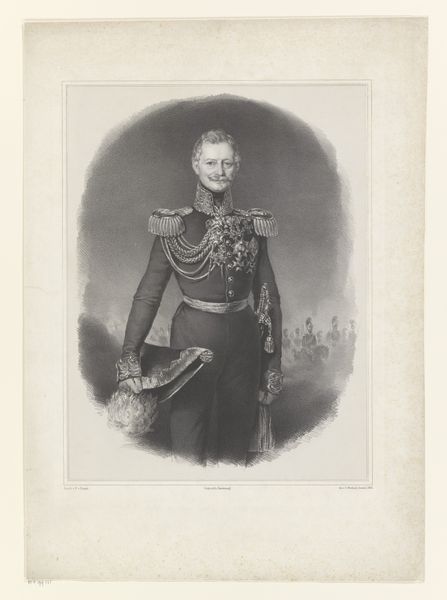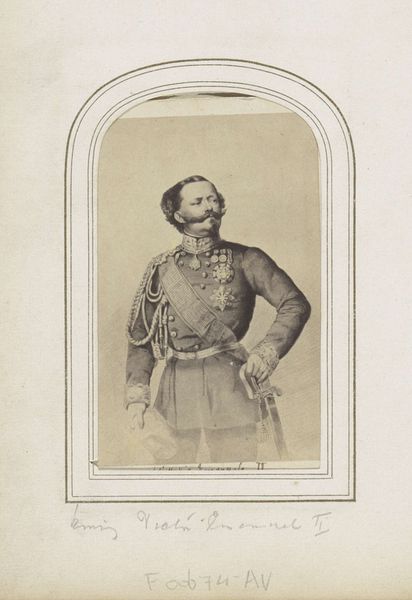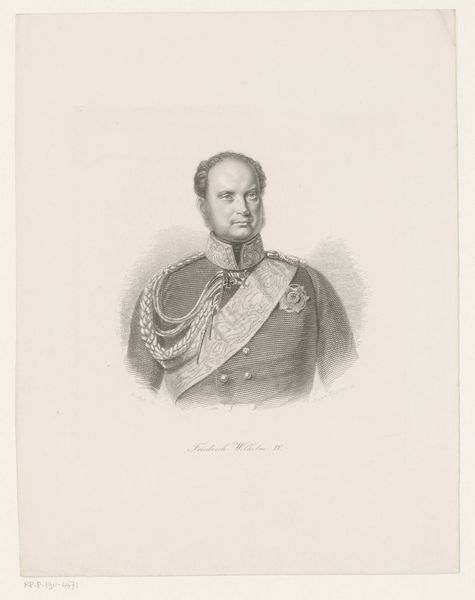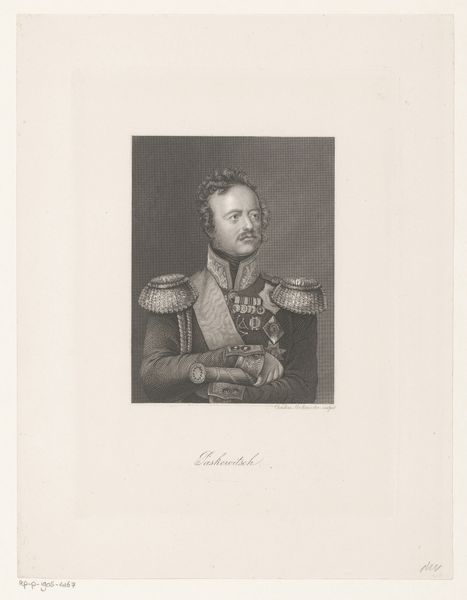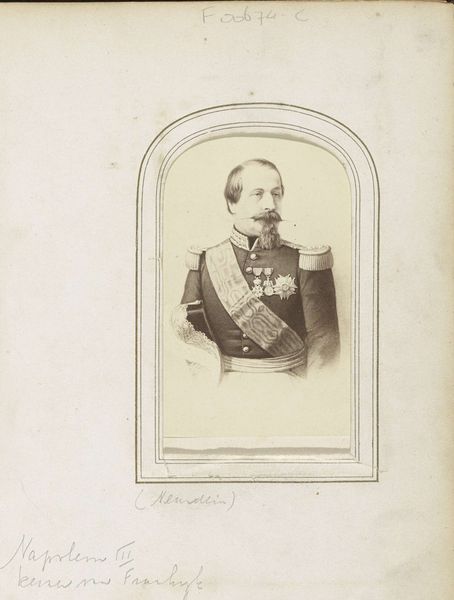
print, engraving
#
portrait
#
pencil drawn
#
light pencil work
# print
#
pencil sketch
#
pencil drawing
#
history-painting
#
italian-renaissance
#
engraving
#
realism
Dimensions: height 494 mm, width 386 mm
Copyright: Rijks Museum: Open Domain
Editor: This is a print from 1859, "Portret van Victor Emanuel II van Italië", by Jean-Baptiste Adolphe Lafosse, housed here at the Rijksmuseum. The precision of the engraving captures such fine detail in the uniform. It's so striking! I wonder what can be read in this portrait of a King? Curator: Indeed, it's tempting to read it just at face value, isn't it? But consider the socio-political forces at play in 1859. Italy was on the cusp of unification, a period of intense political maneuvering and war. How do you think portraiture like this served a public function at the time? Editor: Well, he’s got all these medals and ribbons… he definitely looks powerful, like he is someone to be admired. Maybe this image was meant to create support for the unification and strengthen the king's image? Curator: Precisely. Portraits of leaders weren't simply about capturing likeness. They played a crucial role in shaping public opinion and projecting power. Think of the context: mass media was nascent. How else would people visualize their leader, the embodiment of a nation in turmoil and progress? Look at the way he's framed by the “Armee D’Italie”, isn’t it? Almost stage setting of political life. Editor: That's true, the uniform looks pristine. You’re saying the reality might have been different from this controlled image? Curator: Absolutely. Art often mediates reality, shaping it to suit a particular agenda. How might this image influence its perception, regardless of factual truth? How does it serve institutional power? Editor: I guess the engraving normalizes and amplifies that image of strength and unity to support those who displayed his image… which probably would have only helped him maintain and strengthen his place. This really gave me something to think about. Curator: And that, ultimately, is the public role of art, isn’t it? It compels us to consider and question the power dynamics embedded in visual culture.
Comments
No comments
Be the first to comment and join the conversation on the ultimate creative platform.
